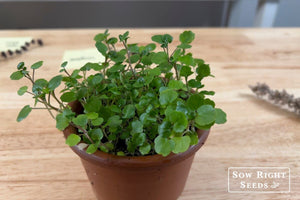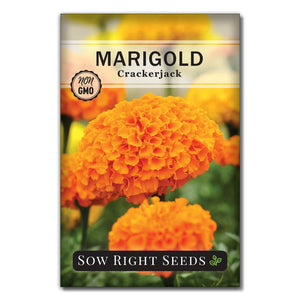Spider Mite Infestation? Here's How to Safely Eradicate Them From Your Plants
PestsA garden is full of life. It’s natural to have all kinds of insects buzzing around. Flies, beetles, bees, there are good and bad. So what about spider mites? Are they good bugs, or are they harmful to plants?

What are Spider Mites?
Spider mites are tiny arachnids. They are less than 0.4 mm and have four pairs of legs. The two-spotted mites we see on our plants are the most common spider mites. It gets its name from the two dark spots on either side of its body, which are accumulations of its body waste. But you have to have a powerful microscope to see it.
Are they a beneficial spider or a harmful mite?
While spiders can be beneficial in outdoor gardens, spider mites are harmful to plants. Like thrips, they pierce plant cells and suck out the juices.
Spider mites spin webs and cover the leaves to protect themselves and their eggs. They are hard to spot and often aren’t detected until there is noticeable leaf damage.
Spider Mite Lifecycle
These microscopic arachnids reproduce rapidly. Spider mites go through a larval stage and two nymph stages. They usually overwinter in the egg stage. Each species varies, but eggs typically hatch in 3 days.
One female spider mite can lay up to 300 eggs in her lifespan and live for two to four weeks.
Their lifecycle can be as little as two weeks under the right conditions, which include temperatures over 90ºF.
How to Identify Spider Mites
It’s difficult to see the spider mites themselves, but the symptoms of their damage are easy to spot.
Signs of spider mites include yellow spots or bronzing on leaves caused by spider mites sucking out chlorophyll. With enough damage, the leaves will fall off, and the entire plant can die. You may also see very fine webbing over the leaves. At first, it will look like the plant is dusty.
Spider mites come in various colors, allowing them to blend in with their habitat. If you suspect that spider mites are present, you can shake the plant leaves over a white piece of paper. Although tiny, you will see them crawling around on the white background.

How to Get Rid of Spider Mites on Plants
Spider mites are a frustrating pest that attacks a wide range of plants. With their rapid reproductive life, it can seem like nothing is working. These methods can help you control them on your indoor and outdoor plants.
Frequent Inspection:
Check frequently on the underside of leaves, as these pests can reproduce rapidly. You usually see them in hot, dry summer weather.
It can be incredibly frustrating when the hot summer sun that causes your tomato plants to take off also creates conditions for spider mites to thrive. This is when you will need to look closely at the underside of tomato and cucumber leaves.
Also, do a thorough inspection when you are bringing in new plants, either from a nursery or from your outdoor garden. This is especially important when bringing in plants that you want to overwinter inside. Hold a piece of white paper up to the plant and shake the leaves. Spider mites will fall onto the paper and crawl around. If you see a fine layer of webbing, that is another sign of spider mites on plants.
Increase Humidity:
Spider mites thrive in hot, dry climates. One way to slow them down is to increase the humidity. Indoors, you can mist your plants or use a humidifier. Keep plants well watered, but don’t overwater.
Clean the Leaves:
Wipe down surfaces on indoor plants. Repeat frequently. This is easier to do with indoor plants that have smooth leaf surfaces. You can spray outdoor plants and those with fuzzy leaves with water. If you already have signs of spider mites, it is important to clean frequently. Because of their fast life cycle, eggs may hatch every three days, depending on the severity of your infestation. Depending on your plant, you can also remove leaves that have been damaged.
Introduce Natural Predators:
Ladybugs, green lacewings, and predatory mites love to eat spider mites. Use companion planting to attract these beneficial insects into your garden. Cosmos, coreopsis, sweet alysum, echinacea, and yarrow are good companion flowers.
Topical Sprays:
There are many topical sprays that can help control the spider mite population. However, use caution with any application to avoid burning your plants. Also, sprays need to be applied in a way that smothers the mites and eggs. In addition to washing plants with plain water, you can spray them with a solution of soapy water. Other sprays to choose from include a dilution of rubbing alcohol and those made from essential oils such as rosemary and peppermint.
Avoid insecticides:
While it might seem that spraying your garden with insecticide would take care of the problem, there are other things to consider. Spider mites can become resistant to chemicals. Insecticides can kill natural predators and beneficial insects, resulting in larger populations of spider mites. Insecticides on flowers can kill pollinators.

Spider Mite FAQs
Can spider mites bite me?
Spider mites' mouth parts are highly efficient for sucking juice out of plant cells and are too small to bite humans.
Can a plant recover from spider mites?
If caught early, plants can recover from spider mite damage. Remove leaves and give your plant all the necessary water and nutrients for healthy growth.
Discovering a spider mite infestation on your plants can be frustrating. But with an understanding of their life cycle and feeding habits, you can get rid of spider mites. Take the time to inspect your plants, especially during hot and dry periods. By cleaning the leaves and increasing the humidity, you’ll go a long way in eliminating spider mites on your plants.






Leave a comment